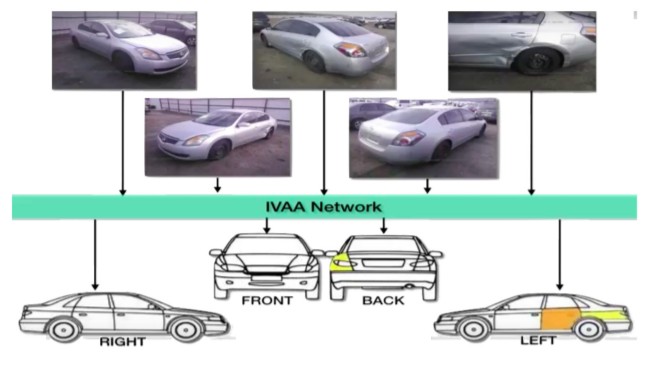Vehicle Part Damage Analysis Platform for Autoinsurance Application
Main Article Content
Abstract
Automatic vehicle damage detection platform can increase the market value of car insurance. The es- timation process is usually manual and requires hu- man experts and their time to evaluate the damage cost. Intelligent Vehicle Accident Analysis (IVAA) system provides an artificial intelligence as a service (AIaaS) for building a system that can automatically assess vehicle parts’ damage and severity level. The insurance company can adopt our service to build the application to speedup the claiming process. There are four main elements in the service system which support four stakeholders in an insurance company: insurance experts, data scientists, operators and field employees. Insurance experts utilize the data label- ing tool to label damaged parts of a vehicle in a given image as a training data building process. Data scientists iterate to the deep learning model build- ing process for continuous model updates. Opera- tors monitor the visualization system for daily statis- tics related to the number of accidents based on lo- cations. Field employees use LINE Official integra- tion to take a photo of damaged vehicle at the acci- dent site and retrieve the repair estimation. IVAA is built on the docker image which can scale-in or scale- out the system depend on utilization efficiently. We deploy the Faster Region-based convolutional neural network, along with residual Inception network to lo- calize the damage region and classify into 5 damage levels for a vehicle part. The accuracy of the localiza- tion is 93.28 % and the accuracy of the classification is 98.47%.
Article Details

This work is licensed under a Creative Commons Attribution-NonCommercial-NoDerivatives 4.0 International License.
References
D. A. Ferrucci, “Introduction to “this is watson”,”IBM Journal of Research and Develop-ment, vol. 56, no. 3.4, pp. 1:1–1:15, 2012.
T. Neo, “Car damage detective,” https://github.com/neokt/car-damage-detective, Dec. 2017.
B. R. Meijer, “Rules and algorithms for the de-sign of templates for template matching,” inPro-ceedings of International Conference on PatternRecognition, 1992, pp. 760–763.
H. Y. Kim and S. A. de Ara ́ujo, “Grayscaletemplate-matching invariant to rotation, scale,translation, brightness and contrast,” inAd-vances in Image and Video Technology, D. Meryand L. Rueda, Eds. Berlin, Heidelberg: SpringerBerlin Heidelberg, 2007, pp. 100–113.
F. Jurie and M. Dhome, “A simple and efficienttemplate matching algorithm,” inProceedings ofInternational Conference on Computer Vision,vol. 2, 2001, pp. 544–549 vol.2.
A. Hofhauser, C. Steger, and N. Navab, “Edge-based template matching and tracking for per-spectively distorted planar objects,” inAdvancesin Visual Computing.Berlin, Heidelberg:Springer Berlin Heidelberg, 2008, pp. 35–44.
S. Ren, K. He, R. Girshick, and J. Sun, “Fasterr-cnn: Towards real-time object detection withregion proposal networks,”IEEE Transactionson Pattern Analysis and Machine Intelligence,vol. 39, no. 6, pp. 1137–1149, 2017.
R. Girshick, J. Donahue, T. Darrell, and J. Ma-lik, “Rich feature hierarchies for accurate objectdetection and semantic segmentation,” inPro-ceedings of International Conference on Com-puter Vision, 2014, pp. 580–587.
J. R. Uijlings, K. E. Sande, T. Gevers, and A. W.Smeulders, “Selective search for object recogni-tion,”International Journal Computer Visxion,vol. 104, no. 2, p. 154–171, Sep. 2013.
S. Sabour, N. Frosst, and G. E. Hinton,“Dynamic routing between Capsules,” inAd-vances in Neural Information Processing Sys-tems, I. Guyon, Ed.Curran Associates, Inc.,2017, pp. 3856–3866.
M. D. G. Mallea, P. Meltzer, and P. J. Bentley,“Capsule neural networks for graph classificationusing explicit tensorial graph representations,”CoRR, vol. abs/1902.08399, 2019.
Tzutalin, “Labelimg,” Free Software:MIT License, 2015. [Online]. Available: https://github.com/tzutalin/labelImg
Z. A. Shaikh, U. A. Khan, M. A. Rajput, and A. W. Memon, “Machine learning based number plate detection and recognition.” Portugal: SCITEPRESS - Science and Technology Publications, Lda, 2016, pp. 327–333.
I. Sommerville, Software Engineering, 9th ed.USA: Addison-Wesley Publishing Company,2010.


